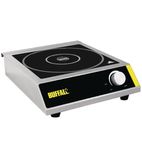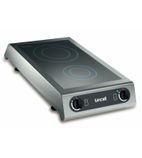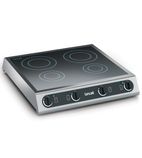Induction Hobs
Induction hobs are the pinnacle of hob technology and a freestanding induction hob unit is a much sought after addition to many kitchens - they are far faster and more energy efficient than traditional heat tranfer electric hobs, and allow instant control of temperature similar to that experienced when using a gas hob. There is a lot of competition between brands such as Lincat, Apollo, Burco and Buffalo to produce the most effective induction hob unit, but pricing varies a great deal as well to reflect different power outputs and sizes of unit, so there is an option to choose from in this area regardless of your budget.
Remember, only induction compatible pans will work with an induction hob (made of magnetic metals like iron or steel, not copper, glass or aluminum). Interface disks are available that can allow any pan to be used however.
![]() * Items marked with the 'Order Today Delivered Tomorrow' graphic qualify for Next Day Delivery only if the item is ordered before the Next Day Delivery cut off time shown on the product page. Some Next Day Delivery services are chargeable.
* Items marked with the 'Order Today Delivered Tomorrow' graphic qualify for Next Day Delivery only if the item is ordered before the Next Day Delivery cut off time shown on the product page. Some Next Day Delivery services are chargeable.
Suitable for: Bed and breakfasts, Restaurants, Fast food outlets, Schools, Armed forces.


